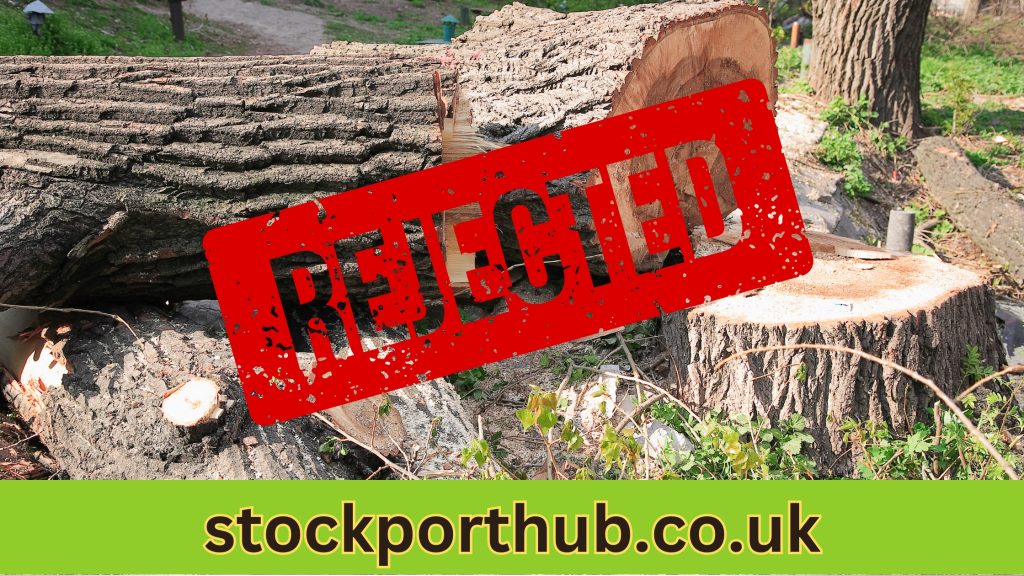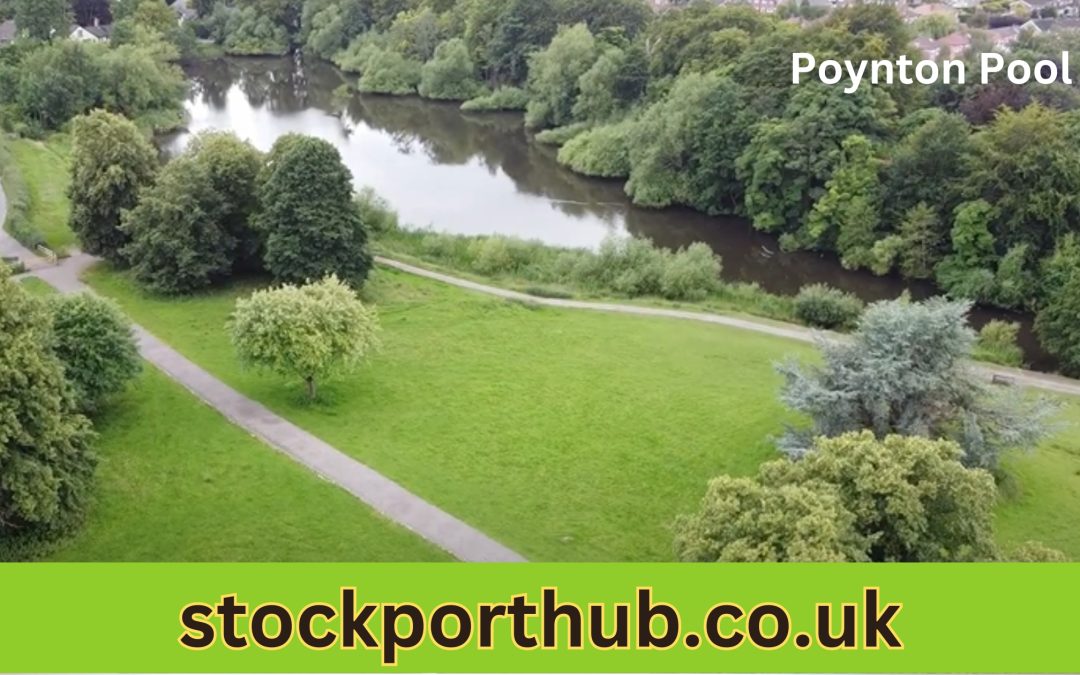Nestled in the heart of Poynton, a picturesque village with a strong sense of community, lies a remarkable natural treasure – the Poynton Pool. This oasis, however, is under threat, and the local community isn’t standing by idly. A passionate campaign has been ignited, its flame fuelled by the determination to preserve the trees that grace the pool’s surroundings.
A prominent figure in this campaign is a dedicated town councillor, who’s not only a long-time resident, but also a fervent protector of Poynton’s green belt. His consistent opposition to inappropriate housing development and proposed taxes on green bins underlines his commitment to conservation.
This article delves into the heart of this campaign, exploring the challenges faced, the strategies employed, and the broader implications for Poynton. It’s a tale of community spirit, environmental stewardship, and the fight to maintain the charm of a beloved village.
The Essence of Poynton Pool Tree Saving Campaign
The Campaign’s Genesis and Its Goals
At the heart of Poynton lies a site of significant historical and ecological value – the Poynton Pool, boasting more than 250 years of existence. Concerned residents, advocating for its preservation, sparked the initiation of the Poynton Pool Tree Saving Campaign. These residents, who make up the campaign group “Friends of Poynton Pool,” express outrage, asserting that despite historical records showing no signs of overflow or breach of the dam, there’s still an ongoing threat to the pool’s serene environment.
Organised response gave birth to the campaign, catalysed by the proposal of works potentially harmful to the pool’s surrounding trees and wildlife. The campaign’s primary mission is to ensure that if any work is to be performed, it leans towards the most environmentally friendly solutions. They contest the £1.38m projected expenditure for these works, suggesting it’s unnecessary and could be cut back.
The Role of Local Community Engagement
Engagement at the local level forms a significant part of the campaign’s strategic arsenal. Stakeholders of this campaign consist of residents who fervently dispute the scope of works determined by the Cheshire East authority for the Poynton Pool. Leveraging their collective voice, they advocate for a new section 10 inspection that enlists convergence of all relevant collated information.
One such voice belongs to David Massingham, a campaigner who stressed the importance of considering the group’s collation of archival data before any further decisions are made about the pool. Ignoring expert advice from some of the country’s topmost qualified professionals, as suggested by the campaigners, particularly the “Friends of Poynton Pool”, would not be prudent. Instead, community engagement urges the authorities to heed scientific advice, consider eco-friendly options, and re-evaluate the budgetary allocation, placing the environment at the forefront of their decision-making process.
Undoubtedly, the essence of the Poynton Pool Tree Saving Campaign lies in the collective action of local residents. It’s their shared diploma, their unwavering commitment to try and protect the environmental legacy of Poynton Pool. It’s anchored on community engagement as its driving force, fostering a shared sense of responsibility towards preserving their historic pool. Each campaigner, community meeting, and piece of information shared contributes to this environmental safeguarding effort. Ultimately, the campaign embodies the power of the local community, stepping forward as custodian of their natural heritage, one tree at a time.

Key Challenges and Campaign Milestones
In the pursuit to protect the assets of nature, every movement experiences its unique set of confrontations and achievements. In the case of Poynton Pool, the “Friends of Poynton Pool” encountered various challenges and marked significant milestones.
Overcoming Legal and Bureaucratic Obstacles
Overcoming legal and bureaucratic hurdles marked one of the significant challenges for the campaign. The incorrect data used to define the Poynton Pool catchment area, as highlighted by Ms Jen Hartshorne, raised issues with the legitimacy of the planned works, while Mr Mike Ellison articulated the contradictions between the proposal and Cheshire East Local Plan Strategy Policy SE5. Additionally, the failure to consider nature-based and friendly solutions, as well as inaccurate information on the condition of the trees, cast doubt on the proposal’s appropriateness. The campaign’s efforts led to the commencement of automatic monitoring for accurate measurements, showing progress in addressing these obstacles.
Garnering Public Support and Media Attention
A steadfast objective of environmental preservation often ignites public support and media attention. The Friends of Poynton Pool’s campaign is an apt instance. It saw the mobilisation of locals against the Cheshire East Council’s planning application, which could lead to the felling of over 31 trees. Their alternative proposal demonstrated their commitment to protect wildlife and habitats while saving costs. The press releases generated awareness about the cause, signifying a significant campaign milestone. Not only did the public resonate with the campaign’s ethos, but the media also amplified its voice, illustrating the campaign’s reach and influence in ecological preservation efforts surrounding Poynton Pool. Consequently, the campaign’s combined efforts have brought about a change towards a more environmentally sustainable future for Poynton Pool.
Ecological Significance of Poynton Pool Trees
Ecologically, Poynton Pool holds great value. Laden with diverse species, its existence marks a significant factor within the local ecosystem. However, the proposed felling of trees threatens this ecological balance, triggering the Friends of Poynton Pool to start their campaign.
Assessing the Environmental Impact
One of the pivotal steps in protecting the Poynton Pool trees involves conducting an Environmental Impact Assessment (EIA). Although, based on regulations from 2017, such an assessment isn’t deemed necessary for this scenario. Thus, a different route was taken.
Instead, an Environmental Assessment Report was prepared. Out of 86 trees identified, only two are of high quality, 62 of moderate quality, and 22 of low quality. No veteran trees, ancient woodland, or registered ancient trees are present on the site. However, each one, regardless of its quality, forms part of this ecosystem, and removing them can result in significant environmental consequences.
The reservoir assessment to analyse the flood risk further indicates a necessity of removing or putting 81 trees at risk, which could reshape the entire ecological balance of Poynton Pool.
Biodiversity and Wildlife Protection Efforts
Poynton Pool is classified as a Site of Biological Importance and a Habitat of Principal Importance, hosting over 16,000 birds and 500 other wildlife species. Nonetheless, there’s yet no detailed plan on how these habitats and wildlife shall be protected post the proposed operations.
The Friends of Poynton Pool campaign is filling this void with community-driven efforts. Their focus is on raising awareness and calling for action to prevent this action, which could endanger numerous species and their habitats. The campaign’s heart lies in nurturing biodiversity, safeguarding the local ecosystems, and preserving this beloved natural space for future generations.
Through the campaign, further strategies are being developed to maintain the area’s ecological diversity while ensuring the emotional connection between the locals and Poynton Pool remains intact. The campaign further underpins that community engagement forms the key to successful wildlife conservation in the area.
Public Response and Campaign Outcomes
From Local Effort to Wider Recognition
The efforts of the “Friends of Poynton Pool”, a local group created to drive the campaign, have transitioned from a grassroot initiative to earn wider recognition.Their pursuit to safeguard the Poynton Pool, an area rich in ecology and history, initiated conversations regarding sustainable solutions. Focused on protecting the trees surrounding the pool, they mounted an effective campaign against the proposed measures by the Council to fell trees for the creation of wider paths and damp overflows.
Critical public response towards the Council’s disregard for nature-based solutions was noticed. The Council’s use of erroneous data, overlooking the potential for non-invasive ecological alternatives ignited public outcry, promoting the campaign’s publicity further. Supported by an Environmental Assessment Report highlighting the possible aftermath of tree removal, the campaign presented a stark picture of ecological loss.
The Power of Grassroots Movements
Underestimating the power of grassroots movements could be an oversight, as revealed by the Poynton Pool Campaign. Mobilisation of local communities and their persistent advocacy led to practical transformations. Automatic monitoring installation for improved data accuracy and a revised action plan by the Council, including reduced tree felling, recognise the strength of collective public voice.
The campaign’s success can be attributed to two main factors. First, the timely intervention with the Environmental Assessment Report, unveiling the accurate data of ecological significance of Poynton Pool’s trees. Secondly, the public’s unwavering support in standing against the reckless endangerment of local biodiversity. This manifestation of public consensus and resistance against bureaucratic hurdles ensures that the ancient trees of Poynton Pool continue to thrive.
Analyzing the Campaign’s Strategy
The Poynton Pool tree saving campaign, driven by the passionate ‘Friends of Poynton Pool’, has adopted strategic initiatives to drive change effectively. These collective actions, rooted in community engagement and environmental responsibility, offer a resilient response to environmental challenges.

Leveraging Social Media for Advocacy
The Poynton Pool campaign has recognised the power of technology and employed it dexterously to advocate for their cause. They’ve turned to social media platforms to amplify their message, rallying public sentiment and support. The campaign consistently shares informative posts on the ecological significance of the Poynton Pool trees, statistics about the predicted impact of proposed works, and updates on legal or policy changes.
Moreover, they tapped into the conversational threads, raising awareness and fostering a sense of shared responsibility towards preserving environmental biodiversity. For example, Friends of Poynton Pool, through various social media handles, hosts live webinars, Q&A sessions, and shares uplifting stories of little victories in their fight, effectively engaging their virtual audience, increasing followers and re-shares. They’ve used social media as a tool to unite voices, leading to increased pressure on decision-makers and catalysing change.
Navigating Through Political Terrains
Political navigation constitutes a crucial part of the Poynton Pool campaign strategy. By leveraging established networks in local and regional politics, Friends of Poynton Pool have ensured that their cause is on the political agenda.
Engagement with local councillors and officials has brought about robust discussions on sustainable development and environmental justice. At the same time, they’ve engaged with the wider public to understand and address their concerns related to Poynton Pool. The campaign’s consistent pressure and public support led to the council considering alternative, more nature-favourable solutions for dealing with flood resilience issues.
An exemplary initiative was when the Friends of Poynton Pool, in June 2023, persuaded the Corporate Policy Committee to enhance scrutiny of Cheshire East Council’s £1.38m scheme. It wasn’t merely defiance; this move demonstrated strategic activism that employs political processes to ensure environmental considerations are not sidelined by bureaucratic decisions.
In essence, this combination of utilizing social media for advocacy and adept political navigation has brought Friends of Poynton Pool a long way in their campaign. Their persistent efforts and strategic thinking continue to contribute immensely towards the cause of saving Poynton Pool’s trees.
Conclusion
The Friends of Poynton Pool have shown that community engagement and eco-advocacy can be powerful tools in the fight to preserve local biodiversity. They’ve faced challenges and obstacles but they’ve also seen progress. Through social media advocacy and political navigation, they’ve managed to bring the plight of Poynton Pool’s trees into the spotlight. Their efforts underscore the importance of community-driven initiatives for wildlife conservation. The Poynton Pool Tree Saving Campaign stands as a testament to the impact of collective action in protecting our natural heritage. It’s a story of resilience, determination, and the power of community. It’s a reminder that when it comes to protecting our environment, every effort counts.
Stephen F is the publisher of this website, he is a long term resident of Stockport. Over the years he has explored every area within Stockport from the Merseyway Shopping Centre to the Etherow Country Park trails.
He can often be found on a lazy Saturday morning frequenting one of Stockport's many coffee shops sipping his favourite latte.
One of his big passions is to go for long country walks with his pet golden retriever Lottie.
One thing is certain he knows Stockport!

